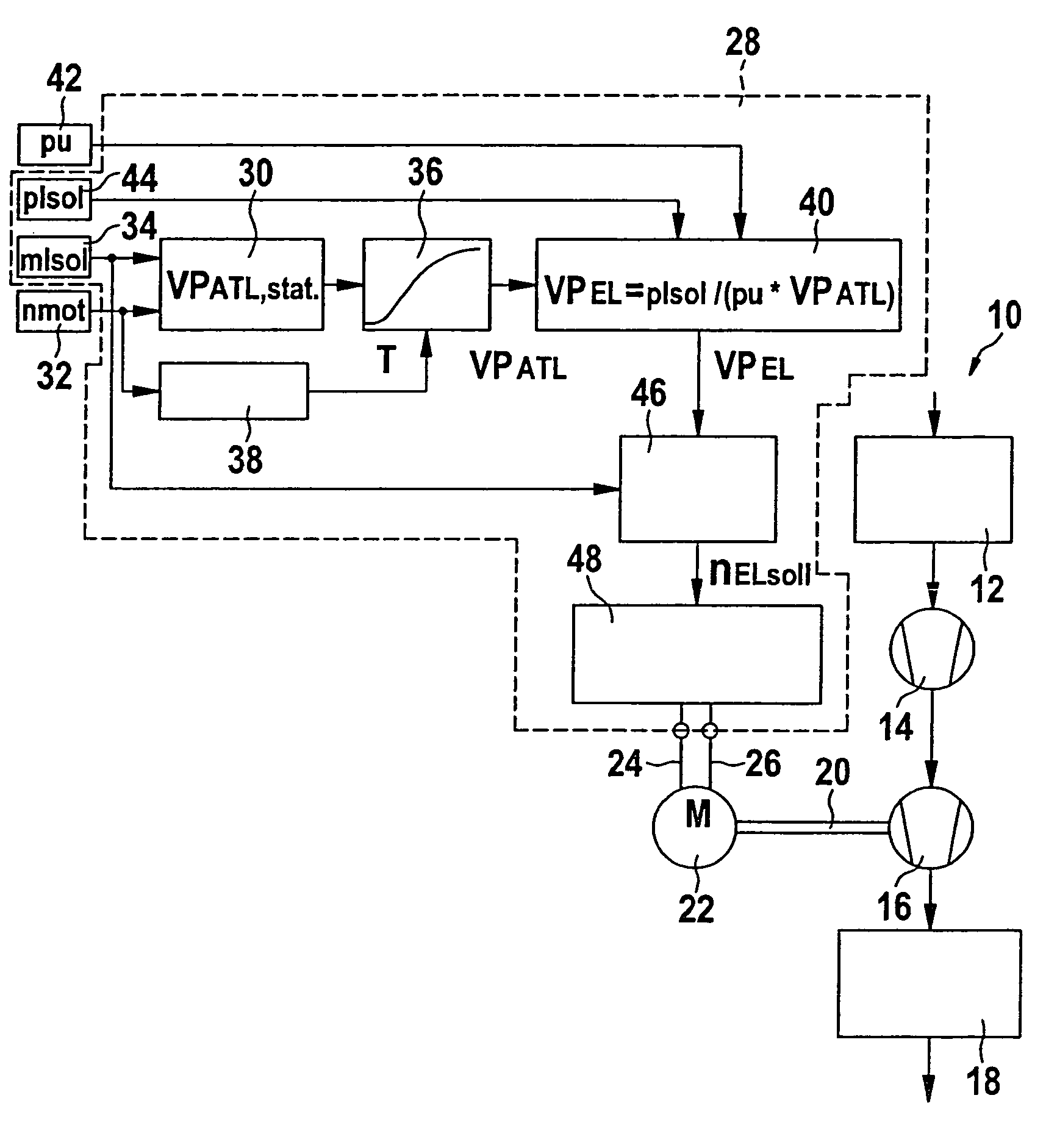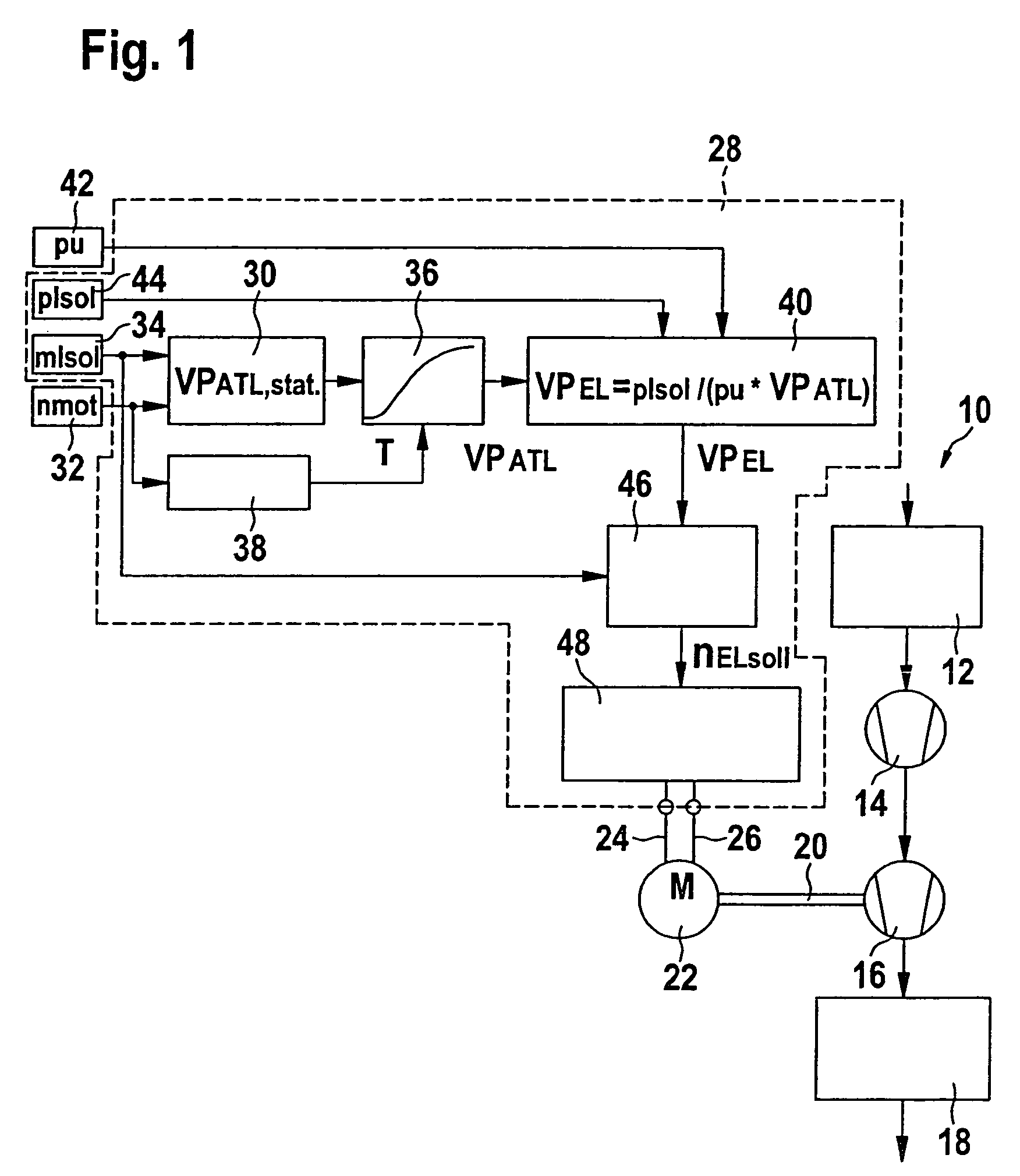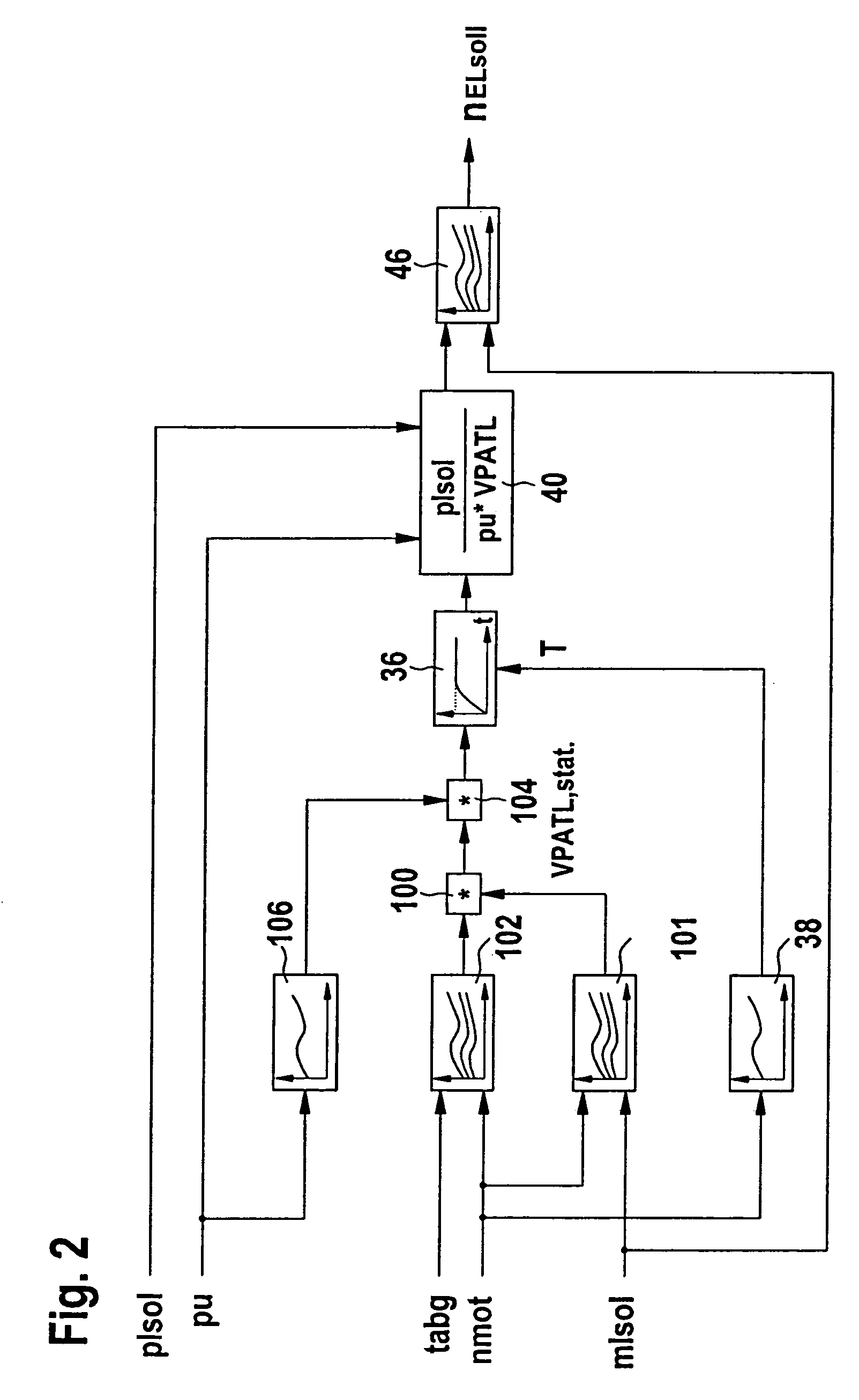Method and device for controlling an electrically driven charger
a supercharger and electric motor technology, applied in the direction of electric control, combustion engines, machines/engines, etc., can solve the problems of high electrical power requirements, not only a high load capacity with respect to the electromotor's speed, and the disadvantage of delayed and insufficient response characteristics of exhaust gas turbochargers at lower speeds of internal combustion engines, so as to avoid unnecessary or excessive interventions
- Summary
- Abstract
- Description
- Claims
- Application Information
AI Technical Summary
Benefits of technology
Problems solved by technology
Method used
Image
Examples
Embodiment Construction
[0014]FIG. 1 shows a schematic block diagram including a flow chart for the control or regulation of an electrical auxiliary supercharger (ES) as a function of demand. Schematically shown in FIG. 1 is air-intake system 10 of an internal combustion engine. The aspirated air is conveyed, among others, via an air filter 12, the compressor of an exhaust-gas turbocharger 14 and electrical auxiliary supercharger 16, to charge-air cooler 18 and from there to the internal combustion engine via the throttle valve. The electrical auxiliary supercharger (ES) is actuated via a drive shaft 20 by an electromotor 22, such as a direct-current motor, which is activated by an electronic control unit 28 via control lines 24 and 26.
[0015]Electronic control unit 28 includes at least one microcomputer in which programs are implemented that implement the control of the internal combustion engine and the electrical auxiliary supercharger (ES). An exemplary embodiment for a program for controlling the elect...
PUM
 Login to View More
Login to View More Abstract
Description
Claims
Application Information
 Login to View More
Login to View More - R&D
- Intellectual Property
- Life Sciences
- Materials
- Tech Scout
- Unparalleled Data Quality
- Higher Quality Content
- 60% Fewer Hallucinations
Browse by: Latest US Patents, China's latest patents, Technical Efficacy Thesaurus, Application Domain, Technology Topic, Popular Technical Reports.
© 2025 PatSnap. All rights reserved.Legal|Privacy policy|Modern Slavery Act Transparency Statement|Sitemap|About US| Contact US: help@patsnap.com



